The Peregrine Falcon has always been a nemesis bird for me. I’ve occasionally seen them far off, either in flight or perched, but have never been able to get close to one. All that changed last week when I spent an incredible half hour very close to a young bird while it was feeding on a female Northern Shoveler.
That’s the good news. The bad news is that there was no LIGHT! DAMMITALL! It was heavily overcast with only a bright spot in the clouds to mark the position of the sun. As usual, this kind of situation requires lots of compromises between shutter speed, ISO, depth of field, motion blur, catch lights, ad infinitum… So compromise I did but I still got many feeding behavior images I find interesting. And since one of the primary focuses of this blog is bird behaviors, you guessed it – a blog post…
First – a warning. Some of these photos are graphic. Proceed with caution if your sensitivities are fragile.
1/250, f/5.6, ISO 640, 500 f/4, 1.4 tc
As I first approached this falcon it was depluming the duck. At times feathers were flying everywhere but at these shutter speeds and apertures many of those shots ended up in the delete bin. At this point I was still using the 1.4 teleconverter but the bird soon let me approach close enough that I was able to ditch the tc and get slightly more shutter speed.
Take visual note of the size of the crop in this image when the falcon has just begun to feed so you can compare it to the size of the crop in some of the later photos. Here it is mostly empty.
1/400, f/5.6, ISO 640, 500 f/4
Occasionally another potentially threatening bird would come along (ravens, harriers etc) and the falcon would pause and look up warily. In some of those shots I was able to get some light in the eye.
1/320, f/5.6, ISO 640, 500 f/4
The falcon seemed not to be disturbed by my presence (shooting from inside my pickup) but when another vehicle or a predatory bird would come along it became nervous. Several times, as in the photo above, it dragged the duck to a slightly more protected spot – in this case, behind this slight hill and rock.
1/400, f/5.6, ISO 640, 500 f/4
In this photo the falcon has begun to remove the intestines before consuming the rest of the duck. The peregrine had pulled and stretched the small intestine trying to remove it and in the process the intestine snapped, leaving a couple of coils of it looped over its beak.
I’ve long been interested in the tendency of many raptors to reject the intestines of their prey which on some levels seems counterproductive to survival. I won’t go into that discussion again now but if you’re interested I’ve broached the subject in this American Kestrel post. The falcon was very intent and deliberate in trying to make sure that all of the intestines had been removed, as you’re about to see.
1/500, f/5.6, ISO 640, 500 f/4
It would grab a gob, pull hard…
1/500, f/5.6, ISO 640, 500 f/4
and discard.
1/500, f/5.6, ISO 640, 500 f/4
Grab another gob, pull…
1/500, f/5.6, ISO 640, 500 f/4
and discard again.
It did this many times.
1/400, f/5.6, ISO 640, 500 f/4
By this time the falcon has consumed a large portion of the duck. I include this photo mainly so you can see the bulging crop.
1/500, f/5.6, ISO 640, 500 f/4
Here the crop is also noticeably swollen and the species of the prey can be easily determined by the spatulate bill.
1/320, f/5.6, ISO 640, 500 f/4
By this time the falcon was engorged and it’s feeding frenzy had definitely slowed. You can see that the duck has been disemboweled by the empty body cavity with the small intestine trailing back toward the direction from which the shoveler had been dragged.
1/500, f/5.6, ISO 640, 500 f/4
One last shot that I thought was interesting. Look at the size of that foot with those impressive attached talons! Peregrines can stoop on prey at speeds exceeding 200 mph. I can only imagine the lethal effect those feet and talons would have on prey at those speeds.
Maybe one day I’ll get another chance at such a scene with a peregrine. If I do I surely hope the light is better!
My apologies for the graphic nature of some of the images. My next post will be more aesthetically appealing, I promise.
Ron


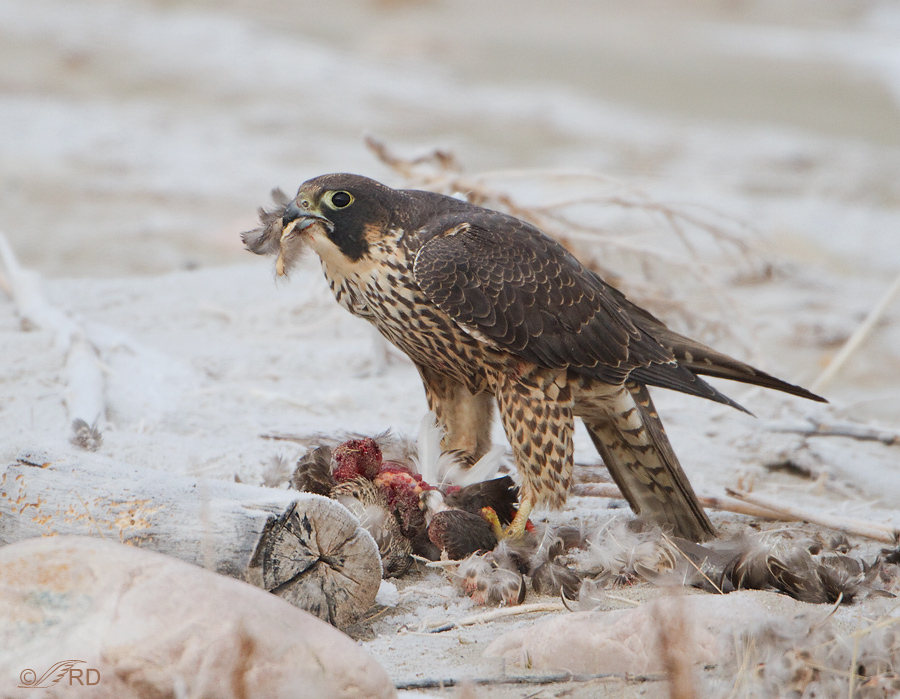
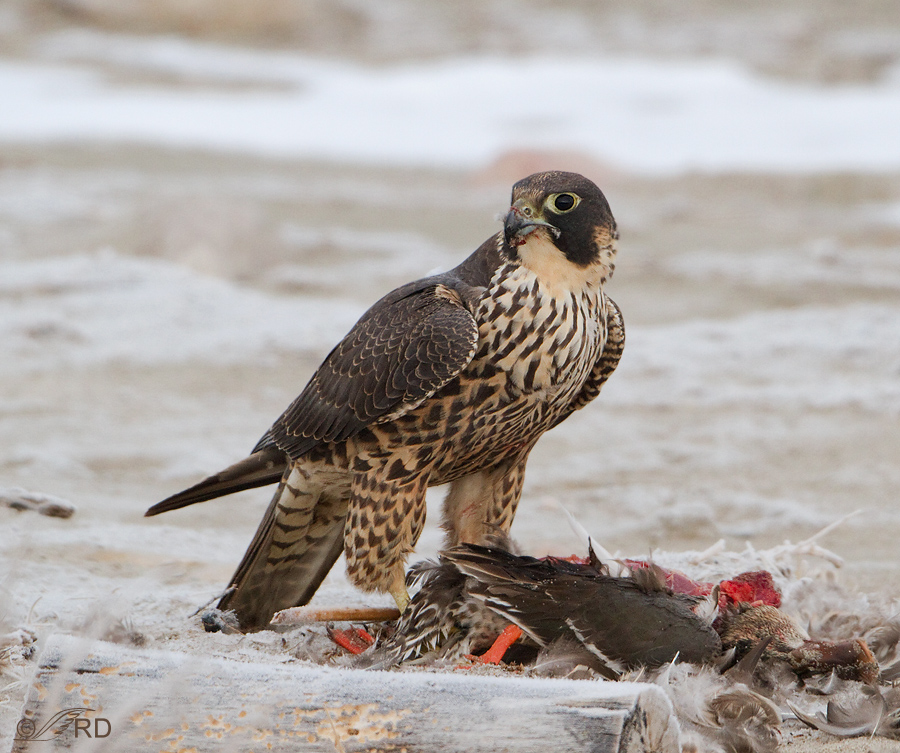
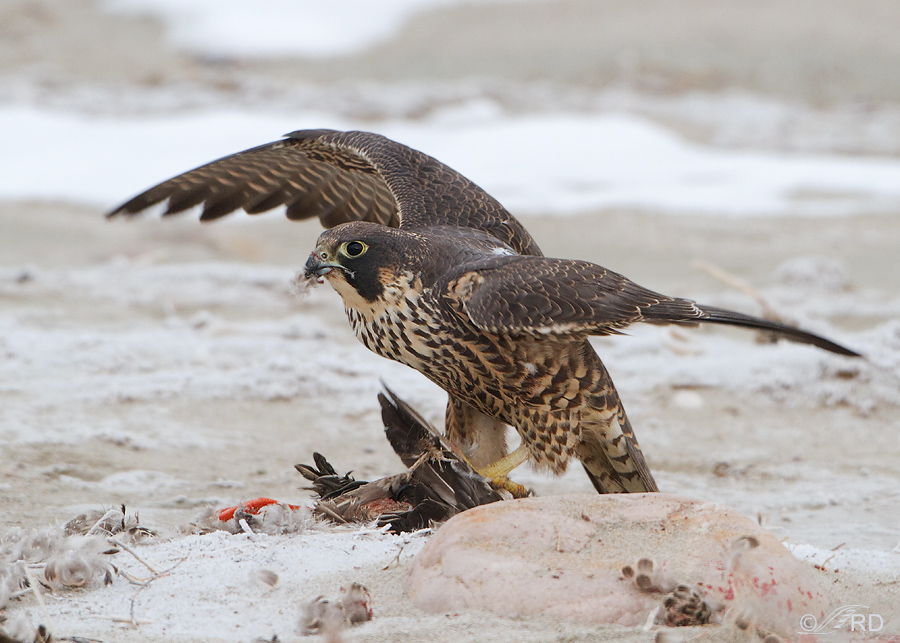
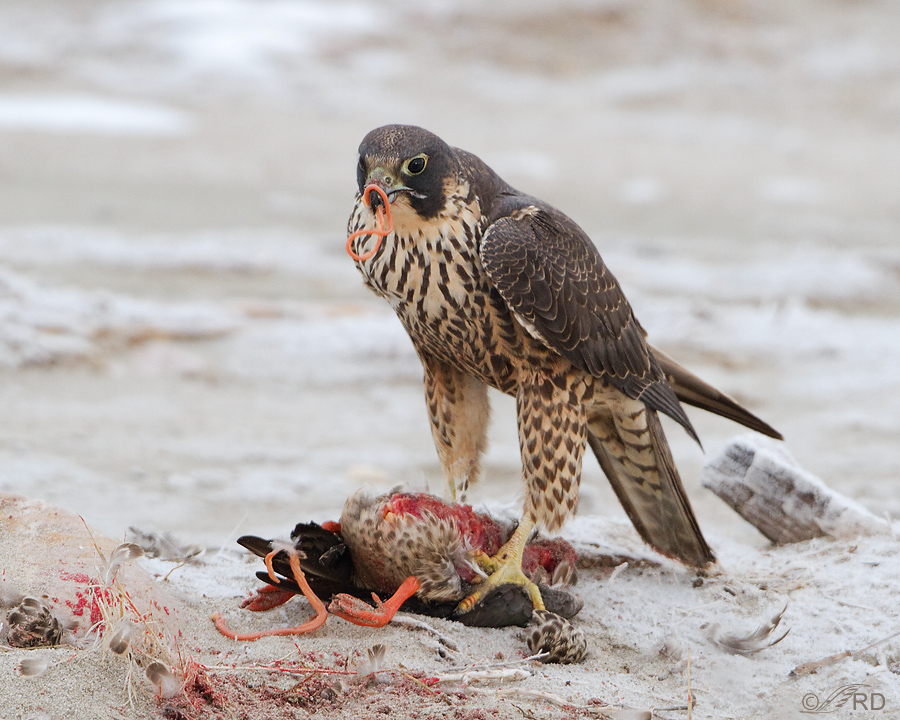
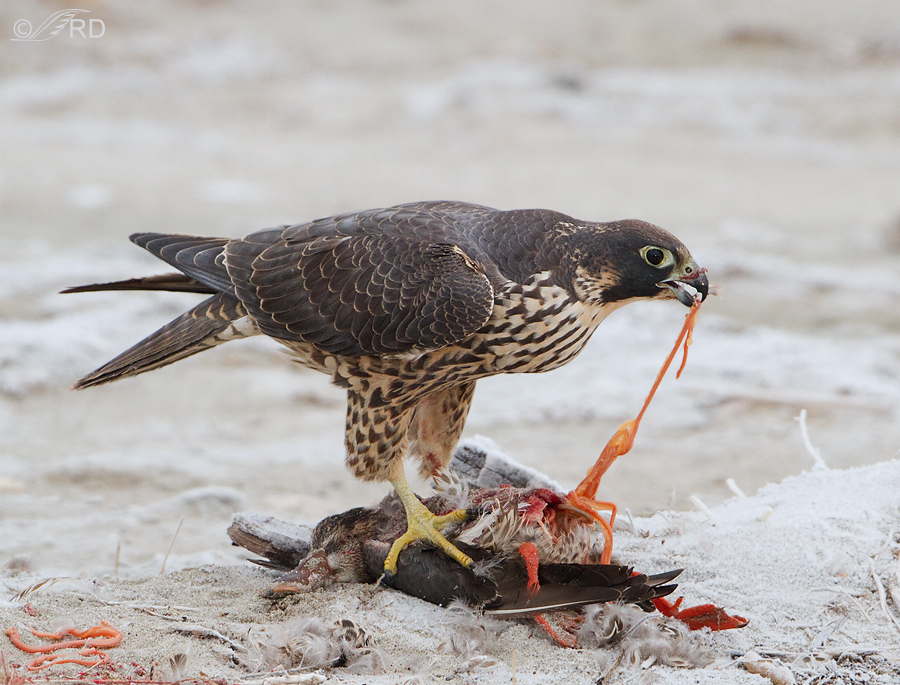
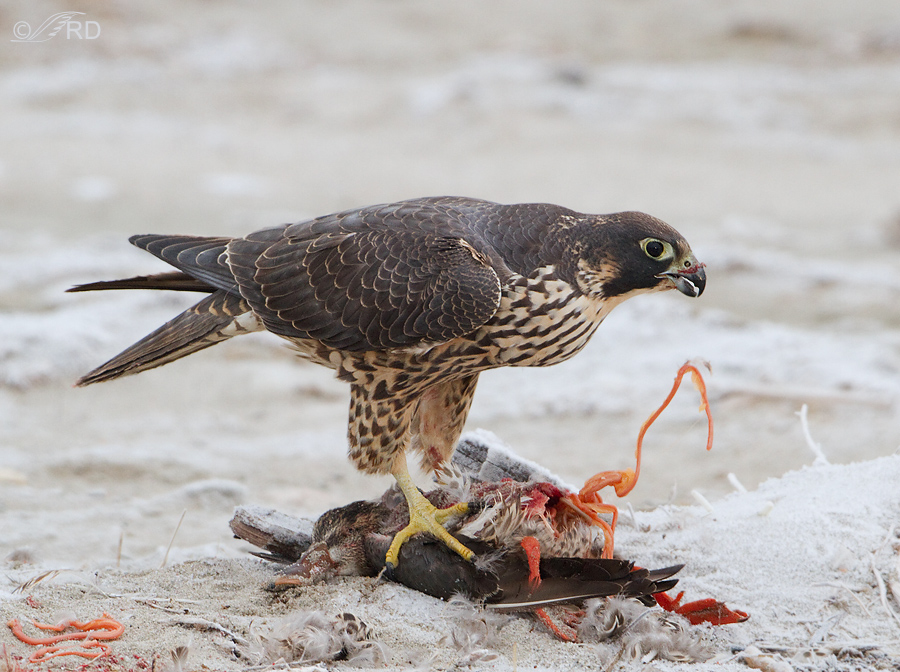
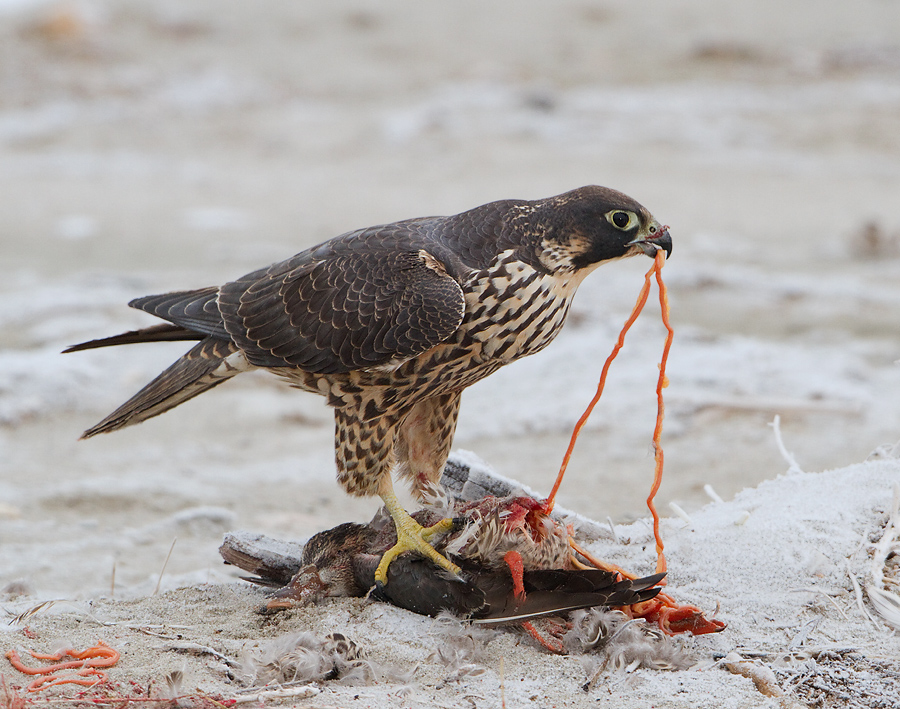
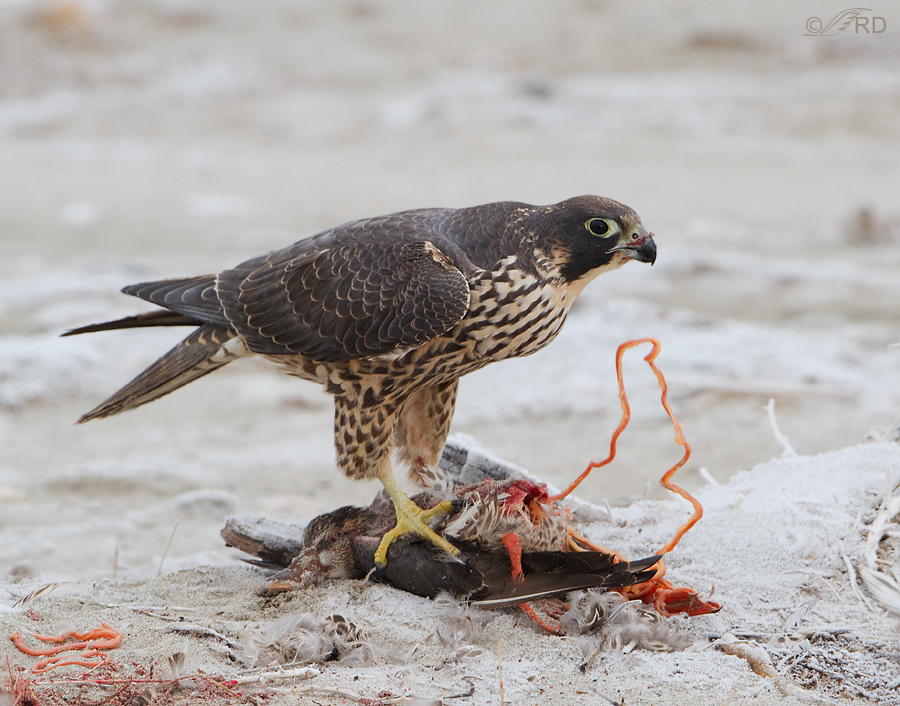
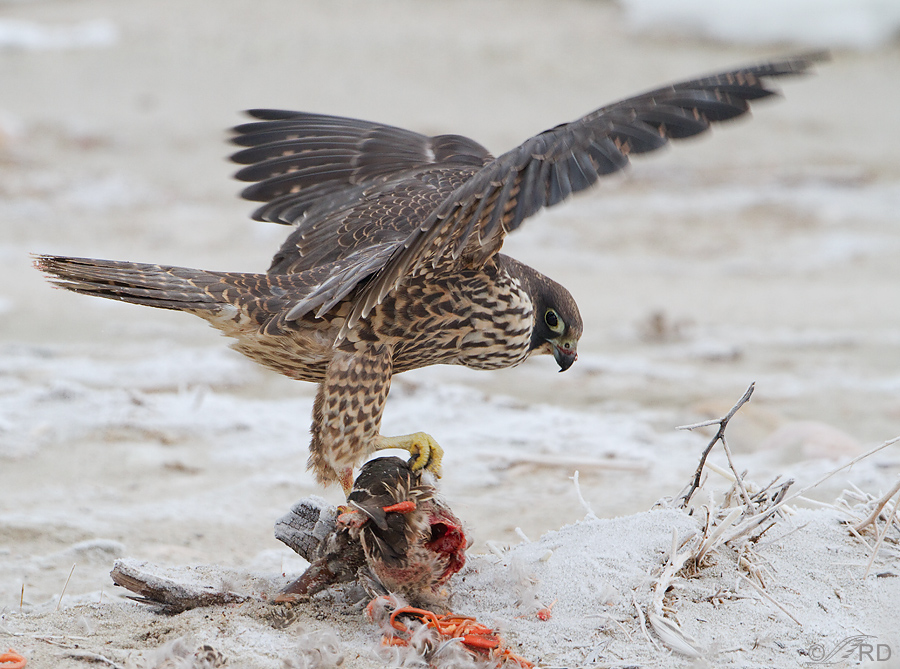
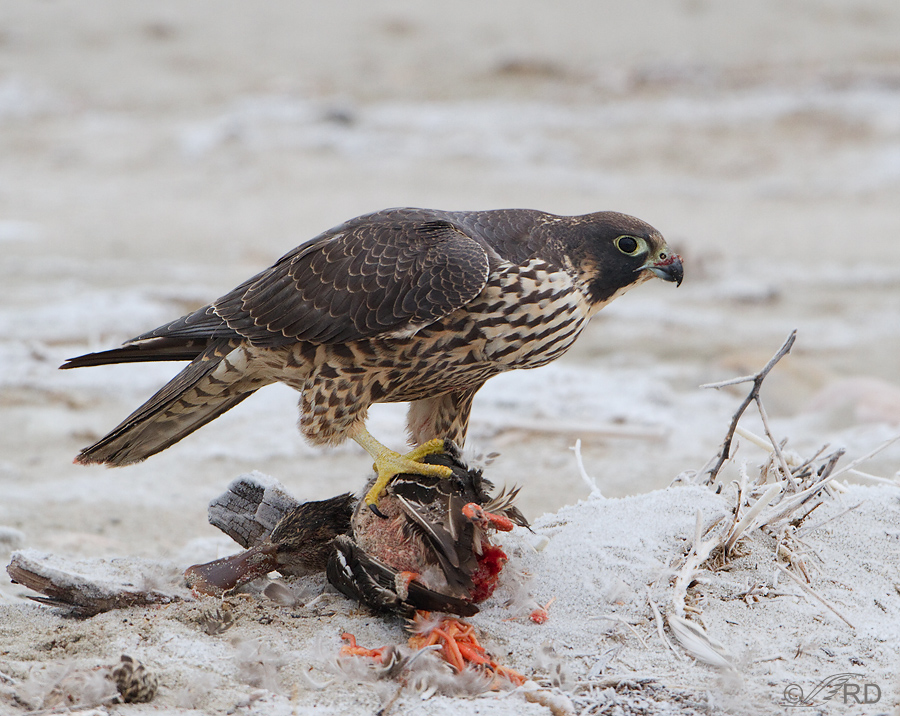
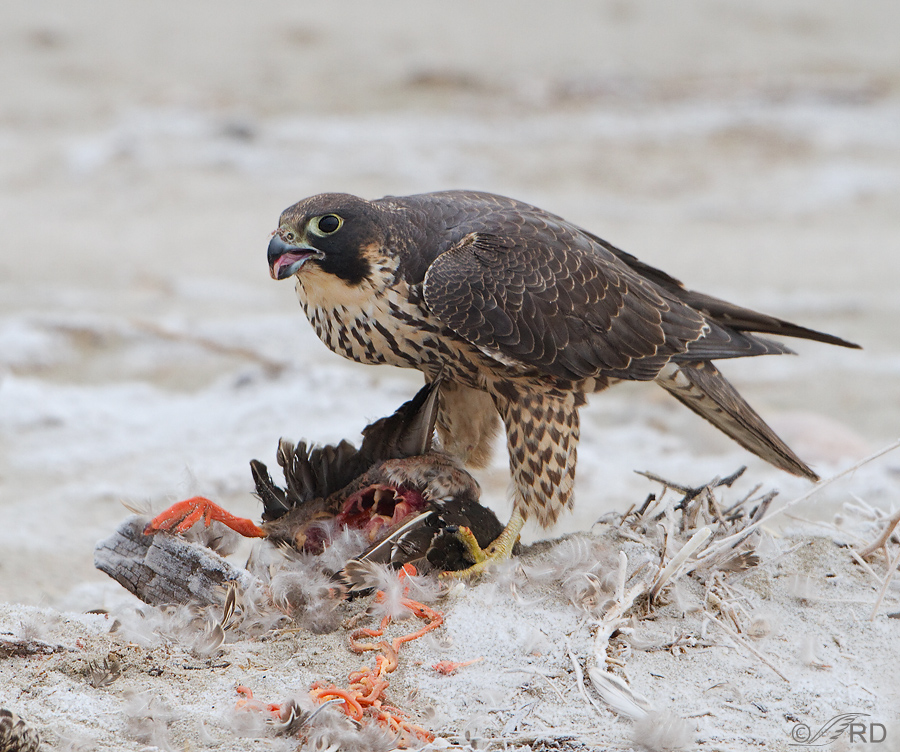
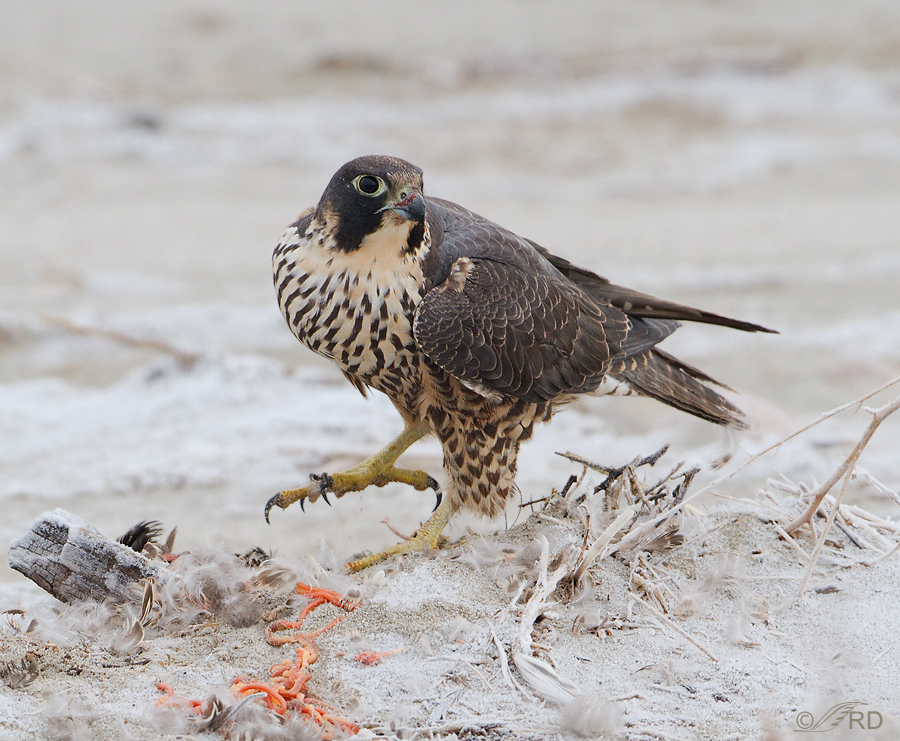
You never know but I think that’s about as good as it gets as far as getting pictures of those guys.I think the young birds are much more attractive then the adults.Thank’s for sharing those pictures
Thanks Dave, though I do wish I’d have had better light.
Thank you to all who have commented here!
Wonderful Pictures in spite of the lighting! That was a young peregrine, judging by it coloring. Your photos are amazing! Thanks for sharing them.
I envy your skill, great feeding fotos of the Peregrine.
Like they say: big foot…big crop. Lol
Wow. What an opportunity. Yes, some of the shots are a tad gruesome, but a bird has to live …. Thank you. Again.
I am very impressed, No envious.
Nice work.